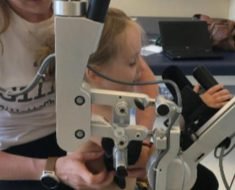New research at this year’s Euroanaesthesia congress in Copenhagen, Denmark, suggests that nail treatments such as acrylic nails or nail polishes do not, as previously thought, affect readings from digital pulse oximetry (DPO) devices used to monitor patients’ blood oxygen saturation (SpO2) levels in hospital.
DPO is universally used to measure blood oxygen levels in patients, however there are concerns that the readings they produce can be affected by treatments such as nail polish or acrylic nails. The DPO device fits around the fingertip including the nail, and the side facing the nail is emitting light which is detected by a sensor on the far side of the fingertip. Since changes in SpO2 levels affect the levels and types of medical intervention, as well as impacting patient monitoring in critical care and anaesthesia, determining whether nail treatments affect DPO readings is crucial.
This study by Dr James Purcell and colleagues at University College Cork, and South Infirmary Victoria University Hospital, Cork, Ireland. aimed to survey attitudes and approaches to the issue among healthcare professionals, and experimentally assess the effect of nail treatments on SpO2 measurements under different physiological conditions. The nail treatments the team studied were acrylic nails and differing colours of nail polish/varnish.
The team issued a questionnaire-based survey to clinical staff at four university hospitals to assess their knowledge and opinions on how nail treatments impact clinical decisions pertaining to DPO. They also conducted an experiment on 12 volunteers to analyse the effects of nail polish of different colours and acrylic nails from popular brands on SpO2 under varying physiological conditions (healthy, venous congestion, and venous constriction). Congestion was modelled by applying a blood pressure cuff to restrict blood flow, while constriction was modelled by immersing the subject’s hand in cold water at 10? for 10 minutes.
There were 86 responses to the survey questionnaire (55 doctors, 21 nurses) with 45% of respondents saying that nail treatments affected the way they conducted their clinical practice. More than 30% of those surveyed had intervened to remove nail treatments to prevent them affecting DPO readings.
The experimental part of the study found that none of the nail treatments examined caused more than a 1% variation in SpO2 readings under any of the physiological conditions tested compared to untreated nails. Furthermore, none of the treatments resulted in an SpO2 of <95%, at which intervention with oxygen therapy is recommended.
The authors found that: “Knowledge of, and approach to potential complications of nail treatments on DPO varies amongst healthcare staff, with poor knowledge or understanding of effects.” They suggest that hospitals should establish policies that do not require the removal of any of the nail treatments examined in this study prior to the use of DPO equipment.
They conclude that: “Experimental data indicate the nail treatments specified do not contribute significantly to a difference in blood oxygen readings, therefore have no clinical impact on patient care.”
Source: Read Full Article





